Arlene Miller's Blog
November 20, 2025
Books You Might Want to Read — or Gift
 Image by Christiane from Pixabay
Image by Christiane from PixabayI keep track of the books I have read on the Goodreads website. Since I forget all about a book the instant I have finished it, I need to keep track of what I have read so that I don’t read it again by mistake! Of course, since I forget what I have read, I guess it wouldn’t hurt to read something again! I think we have all had the experience of getting part way through a book and realizing it sounds very familiar!
Goodreads allows you to set a book-reading goal for the year. I had somehow set my goal for a very optimistic 100 books in 2025. It really is doable to read two books a week — but this year I noticed I was very, very behind! I changed it to 50, and I am still four books behind! Too much spending time watching manifestation videos instead of reading, I guess.
I used to much prefer reading physical books rather than e-books. I still like the look and feel of print books, but e-books are so much easier to read because the reader provides its own light, and you can adjust the font size. So, right now I think print books and ebooks are tied. But then — in come large-print books, which offer both the joy of the print book and the joy of being able to read the type!
Audiobooks, you ask? I think I have “read” one audiobook in my life. I have nothing against audiobooks, but …. I don’t consider listening to audiobooks reading. Audiobooks are like listening to podcasts. Nothing wrong with it at all, but it isn’t reading, just because it also comes in the form of a book. Just my humble opinion.
Since my last “book review” blog post, I have read these books:
Wonderful Tonight by Pattie Boyd – A friend lent this to me, and I started reading it, but the print was very small. I was curious about reading it, so I found the ebook at the library and am really enjoying it. For those of you who don’t know who Pattie Boyd is (because you are too young!), she was married to Beatle George Harrison and then to rocker Eric Clapton. She must be one of the few women married to not one, but two, big rock stars, one right after the other. She was a model in London and met George after she was called to play a non speaking role in their Hard Day’s Night movie. It is a very interesting book, a real look at what it is like to be married to a rock star. Lots of drugs, alcohol, and moodiness. I am about 80 percent finished, and I will probably give it five stars. It is a very good read. *****
Fever Beach by Carl Hiaasen – Hiaasen is very popular here in Florida where he lives. He writes humorous, often satirical, books that take place in Florida. I have read a few of his books and liked them. I quit this one after about 30 pages. Too many characters. I read some of the Goodreads reviews, and many said it was not his best book. It is his new one, and real Hiaasen fans might like it. ***
Atmosphere by Taylor Jenkins Reid – I didn’t realize that two other books I had read and liked in the past were written by the same author: The Seven Husbands of Evelyn Hugo and Daisy Jones and the Six. Atmosphere is a love story that takes place in the 80s in space starring female astronauts. Five stars *****
One Golden Summer by Carly Fortune – An easy-to-read coming-of-age romance. A nice romance with young people. ****
My Friends by Fredrik Backman – A new one by the author of A Man Called Ove, which is one of my very favorite books of all time. I have read a few of his books, none as good, in my opinion, as Ove. This book is about friendship, and I did like it. Four stars ****
The Beginners Guide to Parallel Realities by House of Abundance Publications – I don’t remember a thing about it, so I guess I didn’t learn anything. It has an excellent readers’ rating on Amazon, and I gave it four stars without remembering anything. It is obviously about the universe and quantum physics, which does fascinate me, and ties in with manifestation.****
Intuitive Eating by Evelyn Tribole – It didn’t seem to help my eating habits, but it is a good book, much of it common sense. I did give it a high rating.*****
Manifesting from the Inside Out with the Law of Attraction by Kate Corbin – I don’t even practice the law of attraction; I am more interested in the law of assumption, but they are very much the same, and it is a good book, particularly because it is free with Amazon’s Kindle Unlimited. Plenty of great reviews on Amazon. *****
Nineteen Minutes by Jodi Picoult – I read this for my banned book club (which I have since quit since it is a Zoom from California and begins at 10 p.m. my time. I cannot get my mind in gear that late.) I have read a few Picoult books and enjoyed them. And I liked this one, which is about a school shooting, so parts of it are very intense. But it was not banned because it is about a school shooting. It is banned because of content regarding suicide. Go figure. ****
Your Faith Is Your Future by Neville Goddard – Goddard is the father of the Law of Assumption school of manifesting. He has many books and lectures. This one has a 4.8 rating and 1400 reviews on Amazon. Four stars from me. ****
A Thousand Boy Kisses by Tillie Cole – This book is a young adult tearjerker of a romance, but not a silly tearjerker. I loved it, as did 65,000 Amazon readers. *****
Great Big Beautiful Life by Emily Henry – A Reese Witherspoon Book Club Pick. I have read probably most or all of Henry’s books. They get good reviews and sound good with enticing covers and titles. But I am always a little disappointed. I gave it three stars, but 63,000 Amazon readers liked it, earning it a rating of 4.3. ***
You Are the Placebo by Joe Dispenza – Dispenza is one of the most well-known gurus of the spiritual/manifestation/self healing movement. He deals mostly with healing all manner of ailments and diseases by thought alone. He cured a catastrophic back injury or his own. He is trained as a chiropractor. I saw a woman reading it on a plane I was on and was impressed that someone else knew who he was. You can see the stories of people who have healed themselves on his Youtube channel. Good book *****
I do believe the holidays are upon us. Several years ago I wrote a post listing the many reasons why books make great gifts. I may rerun it or redo it this year. Suffice it to say that books do make great gifts — EVEN GRAMMAR BOOKS! Got someone going to college next year? looking for a job? thinking of homeschooling? needing a little grammar and writing brush up? Check out my dozen grammar books and workbooks on this website and Amazon, and everywhere else online where books are sold. Add if you would prefer to support your local brick and mortar bookstore, my books can be ordered from any of them. Please forgive the shameless plug!
November 13, 2025
Where Would You Go?
 My house in Petaluma, California
My house in Petaluma, CaliforniaHow many different places have you lived in your life? Some people (not too many) live in the house in which they were born for their entire lives. Other people, sometimes because of work, live in many different places, including different countries and states. Have you counted up the number of different places you have lived? Did you like most of them? Why do you live where you live now? Do you like it? Would you live there if you could live anywhere at at all? Where would you live if you could live anywhere at all?
I think I have lived in 18 different places, including three different states:
I was born in Winthrop, Massachusetts, and lived there until I was about two. I don’t remember it at all!Then I moved to Lynn, Massachusetts, where I grew up and went to school until I moved to college. Lynn is a northern suburb of Boston, about 12 miles away. It was lower middle class — maybe middle class. It has a pretty run-down downtown that was thriving in the 50s and 60s. I lived in the dorms at college in Boston for the next four years. I was pretty near Fenway Park, although I never went there during those years.After college I moved back in with my parents in Lynn for six months or so before moving in with my boyfriend in Somerville, a suburb of Boston that has been gentrified in recent years.My boyfriend and I then moved to Stuart, Florida, which is on the east coast of Florida, about 100 miles north of Miami. He got a job there because he wanted to move to a warm climate. I stayed there a year and then we broke up, and I moved back to Massachusetts.I then got a apartment with a college friend in Brighton, Massachusetts, right outside of Boston proper.When she went off to grad school, I moved into an old house in Allston, right near Brighton, with three MIT graduates who knew someone I knew. I don’t even remember how I hooked up with these guys. And I don’t mean “hooked up.” They were friends, and I rented the cheap, small room on the top floor. I lived there for a few years.For some reason, I was always attracted to Framingham, Massachusetts, a western suburb, about 45 minutes from Boston. It is a nice place with a lot of shopping and restaurants. I worked there for a short while, but most of the time I lived there I had a 45-minute commute to work. I lived in a studio in a modern apartment complex with gold shag carpeting and brick walls. I was there for three years.I then moved to a one-bedroom, also in an apartment complex in Framingham. It was very nice, a first floor, where ducks would visit me on my deck. It is there that I met my ex-husband by the pool.We shortly moved to Natick, right near Framingham, to another apartment complex, probably not as nice, but I wanted to move to Natick because you could get Sports Channel on cable, and I wanted to watch the Boston Celtics!Shortly before we got married, we bought a townhouse in Worcester, a little farther west of Boston, and less expensive than Framingham or Natick. We lived there when the kids were born (in Framingham). A couple of years later, we bought a house in North Grafton, a little town near Worcester, kind of rural. It was an odd location: a combination of rural and industrial with four new ranch houses at one end. We lived in the first one. The builder actually ran off before it was quite finished, and we had to pave the driveway among other finishing touches. We had 3/4 of an acre in the back, which was a hill and necessitated a riding mower. There were no sidewalks, and it wasn’t a good place for kids. We lost money when we sold this house, which was kind of a pretty house. I had made friends in Westboro, another western suburb a little west of Framingham, through my small children. Westboro was very nice, and I wanted to live there. So we rented a three-bedroom townhouse there, and the kids went to a prestigious preschool there, where you had to line up in your car early in the morning of registration to make sure you got your kids in!I had never liked the cold or the snow, and had actually had interviews in both Florida and California before I got married. I almost moved back to Florida, Miami area, but I didn’t. So I asked my husband at the time to look for a job in a warm climate. He was in telecom, and there were lots of jobs back then. He almost took a job in Chicago. Not exactly a warm climate, but such a great city, I was almost looking forward to going there. Then he almost took a job in Minneapolis. Yup, I realize we are getting colder and colder. But he told me the driveways were heated and there were heated walkways downtown. We didn’t go. I was actually thinking of the Carolinas, Georgia, or Florida when I asked for a warmer climate. I had been to California a couple of times, but it seemed too far away from home. Well, he got a job offer in Petaluma, California, which of course we had never heard of. He liked what he saw, so I then went out there with him to take a look. I liked it too. So we moved to Petaluma. Petaluma is a lovely city with a small town feel. It has an old downtown where some movies (including Peggy Sue Got Married) were filmed. It had a 50s feel. It is in wine country 40 or so miles north of the Golden Gate Bridge and just north of Marin County. It is in Sonoma County. It is a great place.We rented a nice house in a good part of Petaluma, and the kids started school there, my daughter in first grade and my son in kindergarten.After a year of renting, we bought a house in Petaluma near what was supposed to be one of the best elementary schools in town. It was a great place.Several years later, the marriage ended. I moved again, but I stayed in Petaluma, close by where I was. I bought a smaller, older house in Petaluma, where I lived for nearly 20 years. That was the longest I had ever lived anywhere. My son lived there for a while before moving in with his dad. My daughter lived there until she left home to skate with Disney on Ice, and she still came home when she was off work.My daughter and her husband, in about 2017 or 2018 were ready to get off the road, and they thought about several places to live, but decided they might want to work for their company headquarters, which is in Florida, south of Tampa on the West coast of Florida. They bought a house before it was built in Riverview, about 20 miles south of Tampa. They were on tour, so I signed the papers. I had decided I would move to wherever they moved since my kids are my only family. My son stayed in California. He is still in Petaluma. I moved my things when my daughter and her husband moved theirs, but I stayed in Petaluma, trying to sell my house, I finally gave up and moved into their house to babysit it while they were on tour. Then Covid happened. I won’t go into that whole story, but I lived with them in Riverview for about 9 or 10 months. And my house in Petaluma eventually sold.A little over five years ago, I moved ten minutes from my daughter and son-in-law (and now granddaughter) to a villa in Wimauma where I have a lake (man made, and actually a pond) with pretty birds — and alligators. Another shot of my house in Petaluma
Another shot of my house in PetalumaI can’t say which was my favorite. I can say I am shocked I stayed at my old house in Petaluma for nearly 20 years, since I was ready to sell it after a year. It was such a mess when I moved in, and it needed so much, I never did most of the updating it needed. And the neighborhood was kind of meh, although there were a lot of nice people around. I especially remember the group of us who met every morning in the greenway with our dogs. And I could walk to a strip mall along the greenway to a Starbucks in about 10 minutes. When I redid the living room, it was very nice, and it had a brick fireplace. I didn’t have a lanai, but I had a private front yard that was sunny, and I would sit there every afternoon, like I do now in my lanai. The backyard was fenced, but shady.
Do I like where I live now? I like the villa, and I like the lanai and the view. I do not like Florida. I don’t fit in politically. I cannot walk to anything here. I can’t even drive to much of anything. Anything good is 45 minutes away. Except my daughter — and that is why I am here. I sure miss my son, and I do visit California.
Where would I live if I could live anywhere?? Well, wanting to be near family aside….
I often wished I could live in Paris. Now I hear that Spain and Portugal are popular for those moving out of the United States. Costa Rica is appealing. I have been to Paris, but not the other places I mentioned. But when I think of where I would love to live, one place comes up. About 25 years ago, I took my daughter to a skating camp in Southern California — El Segundo to be exact. I remember walking along Redondo Beach, and maybe Hermosa and Manhattan Beaches and wishing I could live in the houses that were along those beaches. I will never forget that. I guess if I had millions of dollars and could buy my kids and me houses there, and no one needed a job, that is where I would go!
November 7, 2025
Was That a Rhetorical Question?
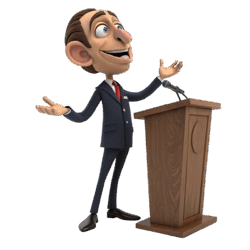 Image by Olena from Pixabay
Image by Olena from PixabayRhetorical Question: A question asked in order to create a dramatic effect or to make a point rather than to get an answer – “Can’t you do anything I ask you to do?”
Rhetoric: The art of effective or persuasive speaking or writing, especially by the use of figures of speech and other techniques.
Rhetorical Device: Technique used in speaking (or writing) to persuade, inform, or entertain the audience by evoking an emotional response.
Here are some common rhetorical devices. Note that some of them are commonly called literary devices and are often used in writing prose as well as poetry.
Allusion: A brief, often indirect reference to a well-known person, event, or work. “We cannot all write like the Bard of Avon himself.”Alliteration: The repetition of the same initial consonant sound in a series of words – “I see people, purpose, practicality, and progress as our priorities.”Anadiplosis: Repetition of the last word of a clause at the beginning of the next one – Day leads to night. Night leads to darkness. Darkness leads to light.”Anaphora: Repetition of a word or phrase at the beginning of successive clauses – “We will fight for our freedoms. We will fight for our country. We will fight for our neighbors.”Asyndeton: The omission of conjunctions in a series to create a fast pace – “We cooked, we ate, we cleaned up, we watched the movie.”Antithesis: Placing contrasting ideas side by side – “It was the best of times, it was the worst of times.Chiasmus: A reversal of grammatical structures in successive phrases or clauses – “Ask not what your country can do for you — ask what you can do for your country.” Epistrophe: Repetition of a word or phrase at the end of successive phrases or clauses – “See no evil, hear no evil, speak no evil.”Euphemism: A more polite or mild word or phrase used to replace a more pleasant one. “My beloved cat crossed over the rainbow bridge last week.”Hyperbole: An extreme exaggeration used to make a point – “I’ve told you at least a million times.”Metaphor: A comparison that states one thing is another – “All the world’s a stage.”Polysyndeton: The use of several conjunctions in close succession – “She visited Spain and Portugal and Greece and France in the course of a few days.” Simile: A comparison that uses “like” or “as” – “The baby is as sweet as honey.”Zeugma: A figure of speech in which one word applies to two others that are completely different – “She broke my heart and my wallet.”Please check out the rest of my modernized, revamped website! www.TheGrammarDiva.com ORwww.bigwords101.com
October 31, 2025
Well, I Swear!!!!
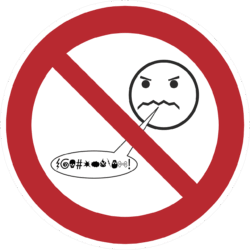 Image by succo from Pixabay
Image by succo from PixabayOh, s%#t! Those symbols in curse words are called a grawlix. There are no real rules about using them. The most common symbols used are &,%,#,@,!, and ?. You can use a string to replace most of the word, or you can use just one to replace a letter. Here is some other trivia about curse words:
When researchers asked people around the world to list every curse word they could think of, native speakers in the UK and Spain were able to rattle off about 16 words, but Germans could think of an average of 53. Why? It might be because the German language allows an endless variety of compound words to be made, so there are many options for new creations!The word shit (pardon my French) or its translation was the most common taboo word uttered in several languages including English, Finnish, and Italian, but not in French, Spanish, German, or Dutch.Unfortunately, curse words that refer to women (such as bitch) are common across the board.Sexual words also came up universally.New words came up that have been created related to social and political change, such as feminazi. Instead of general curse words, new words are created to target people in certain, racial, religious, and gender groups. And many taboo racial and religious words have been there all long.The grawlix was seen in comic strips as early as the 1880s, and read as “bleep.”Church-related curse words were most common in Italian probably because of the strong Catholic tradition and proximity to the Vatican.Men are more likely to curse than women.Extroverts are more likely to curse than introverts. (Not so sure about this one!)On average people swear once for every two minutes of speech.Curse words are not used only negatively. They are very flexible. They can relieve stress and even be used in a humorous manner.Although swearing was at one time assumed to be a sign of aggression or low intelligence, there is now evidence that this is not the case at all.Thank you to Ashifa Kassam and the Guardian for the information!
So, be my guest…..
October 23, 2025
BOO! Time for Halloween Candy!
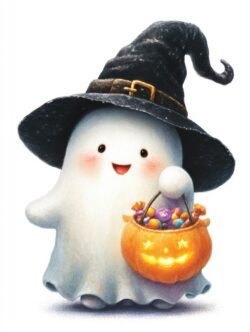 Image by AstralEmber from PixabayThe Best of the Grammar Diva….. (originally published in 2020)
Image by AstralEmber from PixabayThe Best of the Grammar Diva….. (originally published in 2020)
I don’t know about you, but when I think of Halloween, I don’t think about pumpkins and goblins —
I think about candy. And when I got too old to go out with a pillowcase and get my own candy, I stole from my kids’ candy bags (didn’t you????). I loved candy more than they did — I probably still do. I would just take a piece at a time, hoping they wouldn’t notice.
What is your favorite candy? Of course I love chocolate, mostly dark chocolate. Nothing is better than dark-chocolate-covered creams, especially orange and raspberry, and maybe lemon. I also love Reese’s Peanut Butter Cups (even though mostly they are milk chocolate) and Junior Mints. Right now I try not to eat candy, but when I do, my favorites are basically sugar: candy corn, Good and Plenty, and jelly beans. Yeah, I know: you either love candy corn or you hate it, and it seems that most people hate it, but I could eat it by the bag (and I have)!
Whether or not you have bought any candy for trick-or-treaters yet, I thought you might be amused and intrigued by some dandy, candy trivia:
Favorite Halloween Candy – Depends on the state you live in. Candy corn is the favorite in Alabama, so perhaps I should move there! But Reese’s Peanut Butter Cups, Milky Way, and M&Ms are popular everywhere.
Reese’s Peanut Butter Cups – This candy was named after its originator, Harry Burnett Reese.
Candy Corn – The Goelitz brand of candy corn has been around since 1898. It was originally called “chicken feed,” which I am sure some people would prefer to call it now. In 2001 the company changed its name to Jelly Belly. By the way, the Jelly Belly factory is in California. They have a wonderful tour with lots of samples, and they sell bags of irregular (rejected) jelly beans for cheap — they are called Belly Flops. By the way, an opened bag of candy corn can last for three to six months. In my house it can stay for only minutes before it is gone, but I know many people would say it doesn’t matter how fresh or stale it is, it tastes the same.
Candy Cigarettes – I don’t think these have been around for a long time, but they were around when I was a kid. However, North Dakota banned these candies from 1953 to 1969 because they thought the candy would encourage kids to smoke cigarettes.
Tootsie Rolls – Every day 64 million Tootsie Rolls are made.
Tootsie Roll Pops – It takes a licking machine 364-411 licks to get to the chocolate center of a Tootsie Roll Pop. But it takes a human only 144-252 licks. I am assuming the machines are for quality assurance!
Snickers – This candy bar was named after Franklin Mars’ deceased racehorse. The horse was raised at the family farm in Tennessee; the farm was called The Milky Way.
Cotton Candy – This candy was created by a dentist (!), William Morrison, along with confectioner John C. Wharton. It was originally called Fairy Floss until the name was changed to cotton candy in the 1920s.
M&Ms – The two Ms stand for Forrest Mars and Bruce Murrie, who developed and financed them.
Junior Mints – This candy was named after the Broadway play Junior Miss, which ran from 1941 to 1943.
Three Musketeers – This candy bar was so named because originally it featured pieces of chocolate, vanilla, and strawberry candy. However, during World War II, vanilla and strawberry were hard to find, so they went with just chocolate.
Peeps – (Yuck) – Before automation, it would take 27 hours to make a Peep. It now takes 6 minutes, and 5.5 million of them are made in their Pennsylvania factory every day. (Does all candy come from Pennsylvania? Hershey does.)
White Chocolate – Doesn’t even taste like chocolate to me. And why? Because it isn’t really chocolate and contains no cocoa solids at all.
Care for Some Wine? – Wine experts recommending pairing the following candies and wines: Whoppers with Cabernet, Reese’s Peanut Butter Cups with Sherry, and Hershey Kisses with Zinfandel.
How Much Candy Is Too Much? – According to the American Chemical Society, eating 262 fun-size Halloween candy bars would poison a 180-pound person.
Happy Halloween! Eat some candy for me!October 17, 2025
The List
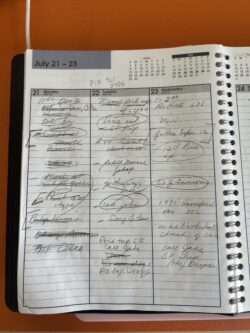 I am a Virgo. We are supposedly organized. I presume that means we make lists.
I am a Virgo. We are supposedly organized. I presume that means we make lists.
I make lists. Lost of lists. Lists of lists. On paper — always.
Most people are now using digital lists and calendars on their phones. When I am at my daughter’s house, I will hear, “Alexa, add apples to the grocery list.”
Nope, not me. I am using my phone most of the day (and, don’t tell anyone, sometimes in the middle of the night). And I am on the computer for multiple hours in any day. But all the lists I make are on paper.
I don’t just have one list. I actually have a “master” list. This list is typed, so it is on my computer. It is printed out, placed on a clipboard, and sitting on one of the shelves on my desk, out of sight. Every so often, I look at it, and if I am lucky, I can cross off a few of the things I have actually done. It is a comprehensive list: book business things, music things, travel things, hobby things, things I need to fix in the house, things I need — and want — to buy, and sometimes things I want to research or write blog posts about. Sometimes — don’t laugh — when I want to relax and clear my head, I will update that list, print it out again, replace the old one with this one on the clipboard, and put it back in the desk. I rarely look at it.
My cannot-live-without list is the agenda book that sits on my desk next to my computer. I look at this one. A lot. I have been using these black “Week at a Glance” books for decades. I actually kept them until I moved from California to Florida when I finally threw away some of them from the 1980s. Back then I used the small ones. Now I use the seven-by-eight-inch books. The photo with this post is a page from this year’s book. You can see how busy and important I am!
Of course there is also a magnetic list on my refrigerator where I jot things I need to buy as I think of them — although sometimes by the time I get to the kitchen, I have forgotten what I was going to write. This list is for groceries, but also anything else I think of that I want (need?) to buy.
When I go grocery shopping, I copy the groceries on that list onto a new list to take with me. I cross them out on the refrigerator list, which also has things I want to buy from Amazon and anyplace else. I buy a lot on Amazon. I know I am not the only one to do this, but I often try to put the grocery list in order of the store setup. However, I just stopped going to Publix (since they now allow open carry — of guns, not groceries), and the new store was seemingly randomly arranged.
When I feel ready to make an Amazon buy, I make a list from the fridge list and bring it to the office. This is when I make a multi-item Amazon purchase.
One last list: If I have a really busy day and lots of things to get done, I also have one of those magnetic pads on my desk, and I make a list of things to do for that day and often put them in order. If they require a trip in the car, I try to put them in geographic order.
Do I get everything done on my agenda book list? Hardly. Things that don’t get done are moved to another day. I am so busy with my lists, I hardly have any time to get things done!
As I look around my office, I also see a list of books I want to read, a list of the books I have written with their prices, and — wow, that is all I can find right now!
Call me crazy, but I love my lists!
October 10, 2025
Where Did the Alphabet Come From?
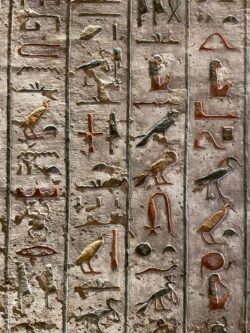 Image by Alex Leon from Pixabay
Image by Alex Leon from PixabayIt appears that our writing system may have been independently invented several separate times because none of the evolving systems shows much influence from the previous ones.
Around 3400–3200 BCE
Merchants needed to keep track of grain, livestock, taxes, and trade.
Sumer (southern Mesopotamia, modern-day Iraq)
System: Cuneiform
The merchants began with little clay tokens to represent commodities (e.g., a cone = a measure of grain). Eventually, they impressed the shapes of those tokens into clay tablets, evolving into wedge-shaped marks made with a reed stylus. The beginning of writing!
Around 3200 BCE
Writing systems then evolved in ancient Egypt in the form of hieroglyphs, only about 250 years after the first examples of cuneiform.
Egypt
System: Hieroglyphics
These hieroglyphics were first pictorial, and then evolved to include phonetic symbols. Hieroglyphics were used for monument inscriptions, religious texts, and administration.
Unlike cuneiform, which leaned toward abstract wedges, hieroglyphs kept their elegant, pictorial style for millennia.
Around 2600–1900 BCE
The Indus Valley Civilization (in modern Pakistan and northwest India) developed a script found on seals and pottery.
It’s short, punchy, and still undeciphered. It is not known if it was a full language, a shorthand system, or just symbolic marks.
Around 1200 BCE
In China, during the Shang Dynasty.
The Shang dynasty set up shop along the Yellow River and wrote early Chinese characters on animal bones during divination rituals.
This writing is found on turtle shells and ox bones and used for divination.
This script is the direct ancestor of modern Chinese characters, an unbroken line of written tradition that’s over 3,000 years old.
Around 1050 BCE
Phoenicians
A consonantal alphabet, stripping down writing to about 22 symbols, making literacy much more accessible.
The Greeks adapted it by adding vowels, leading to what we know as our true alphabet.
The Romans then borrowed from the Greeks, leading to the Latin alphabet, which many languages (including English) use today.
Around 900 BCE
Finally, in Mesoamerica (Mexico and Central America today), writing began to take shape and influenced ancient civilizations like the Aztecs and Maya. Little is known about the history of many of the Mesoamerican languages, because Catholic priests and Spanish conquistadors destroyed a lot of the surviving documentation.
Where did cursive writing come from?
Cursive writing was not invented by one person, but evolved over millennia, with ancient Greeks and Romans using it for speed and efficiency. The term cursive comes from the Latin word for running. Italian scholar Niccolò Niccoli invented the italic style, which forms the basis of modern cursive, in the 15th century, The purpose was to make writing faster and smoother, requiring fewer pen lifts to prevent the quill from drying out or breaking.
Thank you for some of this information: Interesting Facts, article written by Darren Orf and edited by Bess Lovejoy. Check out the website!
October 3, 2025
You’ve Come a Long Way, Coffee
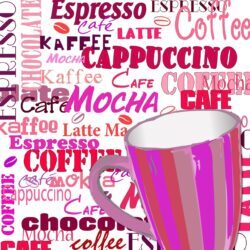 “I’ll have a black coffee, please.”
“I’ll have a black coffee, please.”
“I’ll have an iced decaf caramel macchiato, add shot, upside down, no whip, extra drizzle.”
Yup. Coffee sure has come a long way!
National Coffee Day was this past week, and since I am a fan of coffee, I thought I would do a coffee post. Actually, a friend send me an article about which states have the longest average coffee orders. I thought it was a fascinating topic, so this post was born. I have linked that article at the end of this post.
I have been drinking coffee since I was in kindergarten. I would come home from morning kindergarten and drink coffee with my mother while we watched soap operas! By coffee, I mean Maxwell House Instant Coffee with milk and sugar in it. For special occasions, like bridge club, my mother would take out the big silver percolator and brew the real stuff
My son works at Starbucks, and I have been a fan for many years. When I lived in California, there were also other coffee shops I went to: Peets, a Starbucks competitor, and for a while Deaf Dog, a small locally owned chain I was loyal to for a while at the beginning of the coffee craze. While I never order just “coffee,” I don’t like Starbucks’s coffee, but I do think they have the best “mixed” drinks around.
My drink of the moment depends on the weather and where I will be drinking the coffee. For hot weather and outdoor Florida environments, I currently drink iced shaken espressos, often decaf, with a splash of sweet cream. If I am sitting in my house or another air conditioned place, I drink mochas, formerly peppermint and now with cinnamon dolce. Almond milk, no whip, and extra hot. Former favorites include the amazing java chip frappuccino with almond milk and no whip (extra chips, please) and the chocolate cream cold brew with extra cold foam (my daughter’s favorite).
Yes, if you go every day, or almost everyday, it does get expensive….but then I don’t travel much or buy expensive clothing or jewelry. I don’t drive an expensive car. I guess it all depends on your priorities!
How much coffee do I drink? From looking at my Facebook posts about coffee and my coffee mug posts, you would think it is a lot more than I really drink. I do usually drink my coffee at home. I have a Keurig, which hardly makes me a coffee aficionado! But I do drink good coffee — Starbucks or Peets and always a dark roast. I make 12-ounce cups, so that is fairly large. I go to Starbucks for my iced drinks (in summer, which it usually is here) maybe 5 times a week. I would say I drink about four cups a day, sometimes only three, very occasionally five. Most restaurants have awful coffee, but if I order a salad, I will probably get coffee. (I like the balance of hot and cold! No coffee with hot food unless it is breakfast food.)
I probably drank more coffee when I worked in corporations. They probably have Keurigs now, but back then, they had those round Mr. Coffee pots with the bitter coffee that would be even more despicable at the bottom o the pot, but no one wanted to make a new pot. And when did those pots get washed anyway? It was so easy to just get up — for a diversion — and pour more coffee even if you didn’t want it, and it tasted vile.
I have collected coffee mugs for many years and have them from all over the country and the world. (No, I don’t travel, but my daughter did! Actually I have been to most of the United States except for those big square ones in the middle — no offense if you live there. After all, I live in Florida.) When I moved from California to Florida, I packed up five cartons of mugs. I decided I couldn’t take all of those to Florida, so I gave some away and brought three cartons. They were on display, but are now in cupboards because I have a toddler granddaughter!
OK. I will admit it. I used to drink my coffee black with sugar. And then, black with Splenda. After my kindergarten days, I never cared for milk or cream in it. Then, my daughter got me into the flavored creamers. I don’t know what we would do if we ran out of Snickers creamer!
Some coffee trivia:
It takes 42 espresso beans to produce one shot of espresso.It takes 4000 coffee beans to produce a pound of roasted coffee.A coffee plant reaches maturity in five years.A coffee plant produces only about one pouond of coffee per year.About 400 billion cups of coffee are consumed in the world each year.About 400 million cups of coffee are consumed each day in the United States, making it the world’s largest consumer of coffee.The average U.S. adult drinks about 400 cups of coffee per year.About half the U.S. population starts the day with a cuppa Joe.The term Cup of Joe was coined after Admiral Josephus “Joe” Daniels prohibited alcohol aboard Navy ships and so the men began drinking coffee instead,Finland is the largest consumer of coffee in Europe.An athlete will be banned from competing in the Olympics if the caffeine from about five cups of coffee is detected in their bloodstream.About one tenth of coffee consumed is instant.About 40 percent of coffee drinkers drink it black.One third of U.S. coffee drinkers add sweetener.While wine has about 400 distinct flavor characteristics, coffee has 800.States with the Longest Coffee Orders
September 26, 2025
May I Please Borrow a Word?
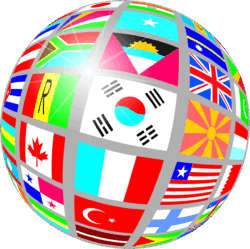 Image by Clker-Free-Vector-Images from Pixabay
Image by Clker-Free-Vector-Images from PixabayI had actually never heard of the term loanword, although it certainly makes sense.
A loanword is a word taken from one language and then integrated into another. Usually, there’s no translation; the word means and looks the same, but in a different language. During the integration process, the pronunciation and grammar might change to fit the new language. There are thousands of loanwords in English. Of course, other languages use loanwords as well.
Loanwords often fill gaps in English vocabulary, meaning there wasn’t a way to express something in English. Loanwords have enriched the language by filling these gaps.
For example, the word “robot” comes from Czech. Until this word entered English, there was no way to describe machines that can help with tasks.
Here is the usual process of integrating loadwords into the language:
When cultures speaking different languages mix, they borrow each other’s words. This is the starting point of the loanword process. People borrow words from the other languages they come into contact with.
For a word from another language to integrate into English, it needs to fit English’s pronunciation and structural features. Therefore, the pronunciation and grammar may change over time. For example, the pronunciation of many French loanwords has changed to be easier for English speakers to say.
People start to use the borrowed words more. Over years of use, these words become so common that English speakers often have no idea they even come from a different language.
Here are just some examples of the many loadwords in the English language:
From LatinAgenda: a list of items to be discussed at a meetingAnatomy: the structure of living organismsCensus: official population countData: facts, numbers, and statistics used for analysisExcavate: to dig out or uncoverFormula: a fixed method or ruleMeditate: to focus or reflect deeplyPeninsula: land surrounded by water on three sidesStatus quo: the existing state of affairsVice versa: the other way around
Notice that the last two still sound Latin, but the others do not.
From Greek (many scientific and words related to study)Democracy: a government system by the people of the countryDialogue: a conversation between two or more peopleEthics: moral principles that govern behaviorHero: a person admired for courage or noble qualitiesHyperbole: a figure of speech that exaggerates for effectIdiom: a phrase with a meaning not deducible from the words themselvesLogic: reasoning conducted according to principlesMathematics: the abstract science of number, quantity, and spacePoetry: literary work expressing feelings and ideas with styleTheater: a place for dramatic performancesFrom French (many foods)Baguette: a long, thin, crusty loaf of breadCabernet: a type of red wineCafé: a coffee shopChaise longue: a long reclining chairChampagne: a sparkling wine from the Champagne regionChic: stylish or fashionableDéjà vu: the feeling that you’ve already experienced somethingElite: a group of people considered superior in statusEntrepreneur: someone who starts and runs a businessFaux pas: a social blunder or mistakeGenre: a category of artistic workHors d’oeuvre: a small appetizerLiaison: communication or cooperation between groupsRendezvous: a meeting at an agreed time and placeSouvenir: a keepsake or memento from a place or eventTouché: acknowledgment of a clever point in a discussionFrom Italian (many foods and art-related words)Balcony: a platform enclosed by a wall or railing on the outside of a buildingCappuccino: a coffee drink made with espresso and steamed milk foamCasino: a place for gambling and entertainmentCupola: a small dome on top of a buildingDuo: a pair of performersEspresso: strong black coffee made by forcing steam through ground coffeeFresco: a painting done rapidly on wet plasterGraffiti: writings or drawings scribbled on walls or surfacesIncognito: in disguise or with one’s identity concealedLatte: a coffee made with espresso and steamed milkMafia: an organized crime syndicateMotto: a short phrase expressing a principle or idealOpera: a dramatic performance combining text and musical scorePaparazzi: photographers who follow celebritiesPiano: a large keyboard musical instrumentSoprano: the highest singing voice in classical musicSpaghetti: a type of long, thin pastaTempo: the speed or pace of a piece of musicUmbrella: a device used for protection against rainViolin: a small, high-pitched string instrumentFrom ArabicAlcohol: the ingredient found in wine, beer, and liquorAlgebra: a type of mathematicsAlgorithm: a set of rules to follow, especially in math or computingCoffee: a drink made from roasted coffee beansGenie: a spirit that can grant wishesGhoul: an evil spirit or creature that eats the deadGiraffe: a tall animal with a very long neckJasmine: a fragrant white flowerMattress: a soft pad placed on top of a bedMonsoon: a seasonal wind that brings heavy rainSaffron: a red-yellow spiceSofa: a piece of furnitureSyrup: a thick, sweet liquidTahini: a paste made from sesame seedsZero: the number 0From GermanAngst: a feeling of deep anxiety or dreadBlitz: a sudden, intense attack or effortBratwurst: a type of German sausageDoppelgänger: a look-alike or double of a living personKindergarten: a preschool for young childrenKitsch: art or design considered tacky or in poor tasteLager: a type of beerNoodle: a type of pastaPoltergeist: a noisy, mischievous ghostPoodle: a breed of dog with curly furPretzel: a type of bread or snackSauerkraut: fermented cabbageSchadenfreude: pleasure derived from another person’s misfortuneSchnitzel: a thin slice of meat, breaded and friedStrudel: a layered pastry with fruit or sweet fillingWaltz: a ballroom dance in triple timeZeitgeist: the spirit or mood of a particular period in historyFrom SpanishAdobe: sun-dried brick made of clay and strawAlligator: a large reptile similar to a crocodileAlpaca: an animal similar to a llamaBronco: an untrained or wild horseBurrito: a rolled tortilla filled with various ingredientsEmbargo: an official ban on trade or other commercial activityFiesta: a festive celebration or partyGuerrilla: a member of a small group engaged in irregular fightingGuitar: a stringed musical instrumentMarijuana: a drug from the cannabis plantMesa: a flat-topped hill with steep sidesMosquito: a small flying insect that bitesPatio: an outdoor courtyard or paved areaPlaza: a public square or marketplaceTornado: a violent rotating column of airTortilla: a thin flatbread made from corn or wheatFrom JapaneseAnime: Japanese animationBonsai: the art of growing miniature treesFuton: a thin mattress used on the floor or a foldable bedHaiku: a short form of Japanese poetry with a 5-7-5 syllable structureJudo: a Japanese martial art focused on throws and grapplingKaraoke: singing along to recorded music using a microphone and lyricsKimono: a traditional Japanese long robe with wide sleevesManga: Japanese comic books or graphic novelsOrigami: the art of paper foldingRickshaw: a small two-wheeled passenger cart pulled by one personSamurai: a member of the Japanese warrior classSashimi: thinly sliced raw fish or seafoodSensei: a teacher or master, especially in martial artsSushi: filled food containing rice, seafood, and vegetablesTsunami: a large, powerful ocean waveLoanwords from ChineseFrom Chinese Bok choy: a type of cabbageDim sum: small dishes typically served with teaGinseng: a root used in traditional Chinese medicineGung ho: extremely enthusiastic or dedicatedKetchup: a tomato-based condimentKung fu: a general term for Chinese martial artsLychee: a small tropical fruit with sweet white flesh and a rough red skinMahjong: a tile-based gameTea: a beverage made from steeped tea leavesWok: a round-bottomed cooking panYin yang: a symbol of two complementary partsFrom other languagesAnchovy (from Portuguese): a small fishBoondocks (from Tagalog): remote, rural areasChocolate (from Nahuatl): a sweet food made from roasted cacaoCurry (from Tamil): a type of spiced stew; a spice blendKangaroo (from Aboriginal Australian): a marsupialKayak (from Inuktitut): a canoeLandscape (from Dutch): a view of land; a type of paintingPastrami (from Yiddish): a cured meatReindeer (from Norwegian): a large deerRobot (from Czech): a machine that can carry out tasks automaticallyTundra (from Sámi): a flat, treeless Arctic regionYogurt (from Turkish): a fermented milk productThank you to the following websites for the information:
September 19, 2025
Aloha!
 Image by bibianagonzalez from Pixabay
Image by bibianagonzalez from PixabayNo, I am not going to or returning from Hawaii! I have no vacation photos and no souvenirs.
But I did want to talk about the Hawaiian language…
A number of states have established English as the only official language on a state level, while other states recognize English alongside native languages. Some states don’t recognize any official language. 30 states have made English the only official language, while Hawaii recognizes Hawaiian alongside English. South Dakota recognizes Sioux as well as English, and Alaska has over 20 official native languages.
Alphabet and Pronunciation: The Hawaiian alphabet has only 13 letters, the five vowels (a, e, i, o, u) and seven consonants (h, k, l, m, n, p, w) plus the Okina’, a glottal stop symbolized by a backwards apostrophe. Grammar: The language lacks a verb for “to be” and doesn’t conjugate verbs for person or number, but does use tense to indicate time. Words and Phrases: Basic words like aloha (hello/goodbye) and mahalo (thank you) are well-known; other words include keiki (child), wahine (women), kane (men), lanai (balcony/patio), and ʻōpala (trash). So that’s where lanai comes from!!! English is the most commonly spoken language in Hawaii, used by roughly 75 percent of the population as their primary language. However, due to its status as a cultural melting pot, several other languages are also prevalent, including Tagalog, Ilocano, Japanese, and the Hawaiian creole known as Pidgin. Hawaiian is easier to learn than English!Only 13 letters
Consistent Pronunciation: Consistent vowel sounds and the lack of silent letters make it relatively easy to sound out Hawaiian words once you learn the rules. Simple Grammar: Hawaiian grammar follows a logical structure: verb-subject-object sentence order and tense markers (like our helping verbs) rather than verb changes to indicate number or person. But there are challenges! Lack of Cognates: Unlike languages like Spanish, there are very few “sister” words between Hawaiian and English, requiring learners to memorize a large amount of new vocabulary. The ʻOkina (Glottal Stop): A unique consonant, the ʻokina (represented by a single quote mark), signals a brief pause and requires practice for English speakers to master its pronunciation. Distinct Grammar:While logical, the grammar is fundamentally different from English. For example, there’s no direct equivalent for the verb “to be,” and adjectives follow the nouns they modify.When British explorer James Cook made the first known European expedition to the Hawaiian islands in 1778, he spelled the islands’ name as both “Owhyhee” and “Owhyee.” At this time, Hawaiian was purely an oral language; its written form wasn’t formalized until American missionary Elisha Loomis printed a primer titled simply The Alphabet in 1822. This written alphabet initially consisted of 21 letters before being standardized in 1826, although four of the original letters (F, G, S, and Y) were included only for the purpose of spelling foreign words. Other letters — B, R, T, and V — were removed because they were considered interchangeable with existing letters.
By 1834, Hawaii’s literacy rate was estimated to be between 90% and 95%, one of the highest in the world at the time. However, the Hawaiian language declined in usage after 1896, when Act 57 of the Laws of the Republic of Hawaii made English the language of instruction for all schools, after which schoolchildren were sometimes even punished for speaking Hawaiian. The language has seen a resurgence since the 1970s, with several groups working toward preserving it.



